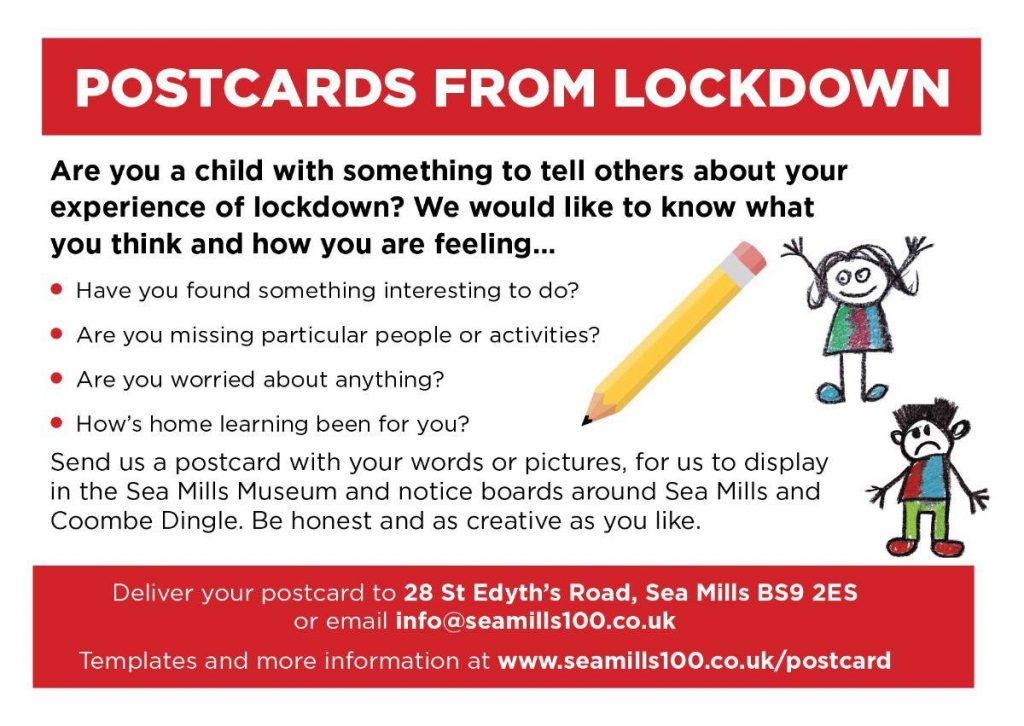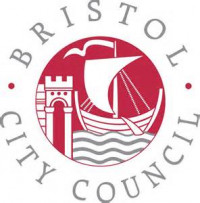
Community Projects on Estates
The city-wide Homes for Heroes 100 programme celebrating the centenary of council estates in Bristol was officially launched in April 2019.
The community projects were due to run through the first half of 2020 with the grand finale expected to take place in June 2020 on the Hillfields estate, but plans had to be changed with the onset of the pandemic.
Highlights of the programme up until spring 2020 included:
- The birthday celebrations for the Addison Oak in Sea Mills and the opening of the Sea Mills 100 Museum in a former telephone-box on The Square.
- The wide distribution of free copies of the Homes for Heroes 100 publications: a book of walks, a book of memories of living in council housing and a comic book.
- A day of debates and presentations on council housing within the Festival of the Future City 2019.
- A site-specific arts experience hosted in homes on the Knowle West estate produced by Knowle West Media Centre.
- The premiere of three short films on council housing past, present and future produced by the Architecture Centre.
This article focusses on the revisions to the plans for the ongoing activity in the communities of Hillfields, Sea Mills and Knowle West. It is based on material gathered by Lori Streich in the summer of 2020.
Hillfields Homes for Heroes
In April 2020, soon after the first lockdown began, Ruth Myers of Local Learning confirmed that everything proposed for the project at Hillfields would still go ahead, though the series of events intended to coincide with the centenary of the 1920 visit to the estate by a group of international delegates would move to June 2021. She said: ‘… we don’t want people to feel that the contributions they’ve made so far will go to waste. And, with people now in isolation, a priority for us is to stay in contact with the people who have given so much already.’
Most of the core group of participants in the project are in their 70s or older. Many have access to the internet and Local Learning has been able to keep in touch with them using email messages and Zoom meetings, building on existing relationships. This has enabled some degree of connection to be maintained with people who might otherwise have experienced significant isolation. Those who are not online, and who are potentially even more isolated, have been regularly telephoned to be asked for further details about their stories of living on the estate.
Because the project end-point has been extended into 2021, there will be time to collect material from a larger number of people, some of whom may not have come to the pre-lockdown ‘in-person’ sessions held in the local library.
As a result of the revision to the schedule the booklet and drama which will be produced for June 2021 will now be richer and reflect a higher degree of participation than might otherwise have been the case. An additional unexpected output has been the development of a Story Map highlighting musical memories.
Sea Mills 100
Mary Milton, the project coordinator of the activity in Sea Mills, had planned to run a series of events in May and June 2020, including two further ‘Snack, Chat’ events; resident-led walks on the VE Day Bank Holiday; and a celebration of the project as a whole. The final outputs – a booklet and further audio content – will now not be launched until 2021.
Lockdown has seen a significant increase in the project’s online and local presence. In March 2020, the Sea Mills Museum was closed and all of its content, including the oral history recordings, moved to the Sea Mills 100 website, allowing visitors to take virtual tours. By May, the information for the Sea Mills trail that had been developed as part of the project had been added to the site. It was also printed out and attached to lampposts around the neighbourhood so people could learn about the estate’s heritage when out walking.
A new section on the website entitled Lockdown in Sea Mills and Coombe Dingle enables residents to post pictures and write about how they are passing their time. Content has been regularly submitted, serving the dual purpose of preserving Sea Mills’ heritage and keeping people connected.
Another initiative is Postcards from lockdown – hearing the voices of young people. This offers children and young people an opportunity to describe how lockdown has been for them, and to ‘be part of history and maybe even change it by helping older people understand [their] feelings’. Common themes that have emerged include missing friends; having more family time (some good, some not so good); being bored; enjoying the area; and being sad. Or, in the words of one postcard: ‘Corona Virus Sucks!’ The postcards have been displayed in the windows of the museum and will ultimately be deposited with Bristol Archives.
For older residents, there has been a focus on war stories from both the First and Second World Wars. This was prompted by the 75th Anniversary of VE Day. Stories have been collected about what happened in the suburb during the war; the war experiences of people living in Sea Mills, now and then; and how the area was shaped by war. As with Hillfields, the measures introduced as a result of Covid-19 have added an extra dimension to the original project plan and resources, as well as enabling contact that has helped to reduce the isolation of older people in the area.
The material that has been collected so far is being developed into a series of podcasts which will be produced in 6 to 8-minute segments for the community radio station, BCFM. LinkAge funding is being redirected to buy audio-players which will be pre-loaded with the podcasts and loaned to older Sea Mills residents who do not have internet access. The players are being delivered in-person to increase the level of contact. In addition, web content has been printed out and distributed to digitally-excluded people on the estate.
One of the benefits of this approach is that project volunteers have found that their doorstep conversations have created more content for future recordings. The connections made between Sea Mills 100 and other community organisations has enabled further resources or services to be delivered to the isolated people who need them. In this regard, the project has extended beyond its original remit, and demonstrated how heritage projects can have wider community impact. As a result of her work, Mary has been appointed as a community journalist on the local online newspaper Bristol 24/7, while has further raised Sea Mills’ profile and that of the volunteer resident-led group Sea Mills and Combe Dingle Together, which was launched this year.
100 Years of Knowle West Style
Knowle West Media Centre (KWMC) had planned to run its 100 Years of Knowle West Style exhibition into the summer and then move it to the nearby Filwood Community Centre. Two public events were also planned to run alongside the exhibition: a ‘behind the scenes’ tour, and a celebration of Knowle West gardens and gardeners. In March, the exhibition was moved online to a new section of KWMC’s website. This includes the audio guide and audio descriptions of each section; photographs of the information panels; the Architecture Centre Homes for Heroes 100 films; and music videos by local artists. This has meant the exhibition has been more widely available than was originally anticipated and for a longer period of time. It has also been included on local cultural tourism website Go Bath Bristol.
KWMC still intend to re-install the exhibition at Filwood Community Centre when this is possible. The garden tour was cancelled due to lockdown restrictions and was replaced by a half-hour podcast conversation that is available online.
Conclusions
The Covid-19 crisis has brought challenges. Existing project plans have been reconfigured; and activity scheduled for later in 2020, particularly those involving public events or gatherings, are on hold. This will have an impact on the development and delivery capacity of the organisations leading these projects over an unpredictably long period of time – and these additional demands are not covered by existing funding.
However, the Homes for Heroes 100 community projects have been active and creative during this period. This has resulted in positive and unexpected additional outcomes: a longer lasting programme legacy; new project ideas; greater use of digital technologies to enhance the delivery of heritage projects (and the development of new digital skills on the part of some staff members and volunteers); and ongoing and increased community-building using heritage as the point of connection.

